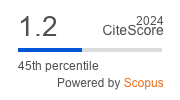Состав и содержание гидролизуемых таннинов в листьях фейхоа, Acca sellowiana
https://doi.org/10.33380/2305-2066-2023-12-3-89-95
Аннотация
Введение. Растение Acca sellowiana, или фейхоа, принадлежит к семейству Myrtaceae и представляет собой вечнозеленый кустарник или небольшое дерево высотой 4–6 метров. Фитохимический состав наиболее подробно изучен у плодов A. sellowiana. Показано, что они наиболее богаты фенольными кислотами, гидролизуемыми и конденсированными таннинами, стероидными сапонинами и флавоноидами. Известно, что гидролизуемые таннины обладают высокой биологической активностью.
Цель. Изучить состав и содержание гидролизуемых таннинов в листьях A. sellowiana.
Материалы и методы. Ультраэффективная жидкостная хроматография в комбинации с диодным и масс-спектрометрическим детекторами.
Результаты и обсуждение. В результате анализа в экстракте из листьев A. sellowiana были обнаружены 22 фенольных соединения. Они были классифицированы как флаван-3-олы, флавоноиды и гидролизуемые таннины. Два соединения идентифицировать не удалось. Общее содержание гидролизуемых таннинов составило 44,28 мг/г или 90 % всех фенольных соединений. При этом эллаготаннины были основными фенольными соединениями экстракта. Их содержание составило 40,47 мг/г, тогда как галлоилглюкоз только 3,81 мг/г.
Заключение. Таким образом, изучен состав и содержание гидролизуемых таннинов в листьях растений A. sellowiana, интродуцированных в оранжерейном комплексе ФГБНУ ВИЛАР. Показано, что листья накапливают в основном мономерные эллаготаннины, на долю которых приходится 92 % от общего содержания гидролизуемых таннинов. Полученные данные свидетельствуют, что листья A. sellowiana могут быть использованы в качестве сырья для получения экстрактов с высоким содержанием эллаготаннинов и разработки на их основе лекарственных препаратов.
Ключевые слова
Об авторах
Т. А. КрольРоссия
117216, Москва, ул. Грина, д. 7
Д. Н. Балеев
Россия
117216, Москва, ул. Грина, д. 7
В. И. Осипов
Россия
117216, Москва, ул. Грина, д. 7
Список литературы
1. Aoyama H., Sakagami H., Hatano T. Three new flavonoids, proanthocyanidin, and accompanying phenolic constituents from Feijoa sellowiana. Bioscience, Biotechnology, and Biochemistry. 2018;82(1):31–41. DOI: 10.1080/09168451.2017.1412246.
2. Fischer G., Parra-Coronado A. Influence of some environmental factors on the feijoa (Acca sellowiana [Berg] Burret): A review. Agronomía Colombiana. 2020;38(3):388–397. DOI: 10.15446/agron.colomb.v38n3.88982.
3. Tuncel N. B., Yılmaz N. Optimizing the extraction of phenolics and antioxidants from feijoa (Feijoa sellowiana, Myrtaceae). Journal of Food Science and Technology. 2015;52(1):141–150. DOI: 10.1007/s13197-013-0968-0.
4. Omarova Z. M., Kuljan R. V. Evaluation of hybrid forms of feijoa (Feijoa sellowiana Berg) on the basis of productivity and fruit quality. Novye tehnologii. 2019;3:181–189. (In Russ.)
5. Mehrabani D., Rasekh H., Farahi M. H., Masoumi S. J., Acker J. P. Screening of feijoa (Acca Sellowiana (O. Berg) Burret) fruit effect on proliferation and apoptosis using bone marrow derived stem cells model. Electronic Journal of General Medicine. 2020;18(1):em269. DOI: 10.29333/ejgm/8458.
6. Kedelidze N., Nakashidze I., Baratashvili D., Lomtatidze N. Feijoa (Feijoa sellowiana Berg) and its usage in medicine. Georgian Journal of Biomedical Sciences. 2019:11.
7. Mosbah H., Louati H., Boujbiha M. A., Chahdoura H., Snoussi M., Flamini G., Ascrizzi R., Bouslema A., Achour L., Selmi B. Phytochemical characterization, antioxidant, antimicrobial and pharmacological activities of Feijoa sellowiana leaves growing in Tunisia. Industrial Crops and Products. 2018;112:521–531. DOI: 10.1016/j.indcrop.2017.12.051.
8. Dell’Olmo E., Gaglione R., Pane K., Sorbo S., Basile A., Esposito S., Arciello A. Fighting multidrug resistance with a fruit extract: anti-cancer and anti-biofilm activities of Acca sellowiana. Natural Product Research. 2021;35(10):1686–1689. DOI: 10.1080/14786419.2019.1624961.
9. Motohashi N., Kawase M., Shirataki Y., Tani S., Saito S., Sakagami H., Kurihara T., Nakashima H., Wolfard K., Mucsi I., Varga A., Molnár, J. Biological activity of Feijoa peel extracts. Anticancer research. 2000;20:4323–4330.
10. Ramírez F., Kallarackal J. Phenological growth stages of Feijoa [Acca sellowiana (O. Berg) Burret] according to the BBCH scale under tropical Andean conditions. Scientia Horticulturae. 2018;232:184–190. DOI: 10.1016/j.scienta.2017.12.059.
11. Zhu F. Chemical and biological properties of feijoa (Acca sellowiana). Trends in Food Science & Technology. 2018;81:121–131. DOI: 10.1016/j.tifs.2018.09.008.
12. Montoro P., Serreli, G., Gil K. A., D’Urso G., Kowalczyk A., Tuberoso C. I. G. Evaluation of bioactive compounds and antioxidant capacity of edible feijoa (Acca sellowiana (O. Berg) Burret) flower extracts. Journal of Food Science and Technology. 2020;57(6):2051–2060. DOI: 10.1007/s13197-020-04239-2.
13. Aniq F. O., Elfarnini M., Abdel-hamid A. A., Blaghen M. Chemical composition of isoflavones compounds and antioxidants from Feijoa sellowiana leaves. GSC Biological and Pharmaceutical Sciences. 2019;9(1):120–124. DOI: 10.30574/gscbps.2019.9.1.0157.
14. Cebi N., Sagdic O. Characterization of Feijoa sellowiana leaves based on volatile and phenolic compound compositions and antimicrobial properties. Food Science and Technology. 2022;42:e14221. DOI: 10.1590/fst.14221.
15. El-Shenawi S. M., Marzouk M. S., Dib R. A., Elyazed H. A., Shaffie N. M., Moharram F. A. Polyphenols and biological activities of Feijoa sellowiana leaves and twigs. Revista Latinoamericana de Química. 2008;36(3):103–120.
16. Kim J., Gripenberg S., Karonen M., Salminen J.-P. Seed tannin composition of tropical plants. Phytochemistry. 2021;187:112750. DOI: 10.1016/j.phytochem.2021.112750.
17. Haslam E. Vegetable tannins–Lessons of a phytochemical lifetime. Phytochemistry. 2007;68(22–24):2713–2721. DOI: 10.1016/j.phytochem.2007.09.009.
18. Baert N., Karonen M., Salminen J.-P. Isolation, characterisation and quantification of the main oligomeric macrocyclic ellagitannins in Epilobium angustifolium by ultra-high performance chromatography with diode array detection and electrospray tandem mass spectrometry. Journal of Chromatography A. 2015;1419:26–36. DOI: 10.1016/j.chroma.2015.09.050.
19. Yoshida T., Yoshimura M., Amakura Y. Chemical and biological significance of oenothein B and related ellagitannin oligomers with macrocyclic structure. Molecules. 2018;23(3):552. DOI: 10.3390/molecules23030552.
20. de Oliveira Schmidt H., Rockett F. C., Klen A. V. B., Schmidt L., Rodrigues E., Tischer B., Augusti P. R., de Oliveira V. R., da Silva V. L., Flôres S. H., de O. Rios A. New insights into the phenolic compounds and antioxidant capacity of feijoa and cherry fruits cultivated in Brazil. Food Research International. 2020;136:109564. DOI: 10.1016/j.foodres.2020.109564.
21. Mosbah H., Chahdoura H., Adouni K., Kamoun J., Boujbiha M. A., Gonzalez-Paramas A. M., Santos-Buelga C., Ciudad-Mulero M., Morales P., Fernández-Ruiz V., Achour L., Selmi B. Nutritional properties, identification of phenolic compounds, and enzyme inhibitory activities of Feijoa sellowiana leaves. Journal of Food Biochemistry. 2019;43(11):e13012. DOI: 10.1111/jfbc.13012.
22. Díaz-de-Cerio E., Arráez-Román D., Segura-Carretero A., Ferranti P., Nicoletti R., Perrotta G. M., Gómez-Caravaca A. M. Establishment of pressurized-liquid extraction by response surface methodology approach coupled to HPLC-DAD-TOF-MS for the determination of phenolic compounds of myrtle leaves. Analytical and Bioanalytical Chemistry. 2018;410(15):3547–3557. DOI: 10.1007/s00216-018-0914-0.
23. Engström M. T., Palijarvi M., Salminen J. P. Rapid fingerprint analysis of plant extracts for ellagitannins, gallic acid, and quinic acid derivatives and quercetin-, kaempferol- and myricetin-based flavonol glycosides by UPLC-QqQ-MS/MS. Journal of Agricultural and Food Chemistry. 2015;63(16):4068–4079.
24. Vivas N., Laguerre M., de Boissel I. P., de Gaulejac N. V., Nonier M.-F. Conformational interpretation of vescalagin and castalagin physicochemical properties. Journal of agricultural and food chemistry. 2004;52(7):2073–2078. DOI: 10.1021/jf030460m.
25. Wakamori S., Matsumoto S., Kusuki R., Ikeuchi K., Yamada H. Total synthesis of casuarinin. Organic Letters. 2020;22(9):3392–3396. DOI: 10.1021/acs.orglett.0c00876.
26. Santos L. S., Alves Filho E. G., Ribeiro P. R. V., Zocolo G. J., Silva S. M., de Lucena E. M. P., Alves R. E., de Brito E. S. Chemotaxonomic evaluation of different species from the Myrtaceae family by UPLC-qToF/MS-MS coupled to supervised classification based on genus. Biochemical Systematics and Ecology. 2020;90:104028. DOI: 10.1016/j.bse.2020.104028.
27. Araújo A. R., Araújo A. C., Reis R. L., Pires R. A. Vescalagin and castalagin present bactericidal activity toward methicillin-resistant bacteria. ACS biomaterials science & engineering. 2021;7(3):1022–1030. DOI: 10.1021/acsbiomatrials.0c01698.
28. Quideau S., Varadinova T., Karagiozova D., Jourdes M., Pardon P., Baudry C., Genova P., Diakov T., Petrova R. Main structural and stereochemical aspects of the antiherpetic activity of nonahydroxyterphenoyl-containing C-glycosidic ellagitannins. Chemistry & biodiversity. 2004;1(2):247–258. DOI: 10.1002/cbdv.200490021.
29. Kato E., Uenishi Y., Inagaki Y., Kurokawa M., Kawabata J. Isolation of rugosin A, B and related compounds as dipeptidyl peptidase-IV inhibitors from rose bud extract powder. Bioscience, Biotechnology, and Biochemistry. 2016;80(11):2087–2092. DOI: 10.1080/09168451.2016.1214533.
30. Al-Sayed E., Michel H. E., Khattab M. A., El-Shazly M., Singab A. N. Protective role of casuarinin from melaleuca leucadendra against ethanol-induced gastric ulcer in rats. Planta Medica. 2020;86(01):32–44. DOI: 10.1055/a-1031-7328.
31. Kuo P.-L., Hsu Y.-L., Lin T.-C., Lin L.-T., Chang J.-K., Lin C.-C. Casuarinin from the bark of Terminalia arjuna induces apoptosis and cell cycle arrest in human breast adenocarcinoma MCF-7 cells. Planta medica. 2005;71(3):237–243. DOI: 10.1055/s-2005-837823.
32. Tolkachev O. N., Sheichenko O. P., Fadeeva I. I., Sheichenko V. I., Semenova T. S., Shipulina L. D., Vichkanova S. A., inventors. The method of obtaining the antiviral drug «Hyporamine». Patent RUS RU2098111C1. 10.12.1997. Available at: https://patents.google.com/patent/RU2098111C1/ru. (In Russ.)
33. Xiao S.-Y., Wen B.-Q., Zhuang H.-Y., Wang J.-L., Tang J., Chen H.-Z., Chen X.-X., Cao Y. Extraction and antitumor activity of pedunculagin from eucalyptus leaves. International Conference on Biomedical Engineering and Biotechnology. 2012:280–282. DOI: 10.1109/iCBEB.2012.217.
34. Khalifa I., Zhu W., Nafie M. S., Dutta K., Li C. Anti-COVID-19 effects of ten structurally different hydrolysable tannins through binding with the catalytic-closed sites of COVID-19 main protease: An in-silico approach. 2020. DOI: 10.20944/preprints202003.0277.v1.
Дополнительные файлы
|
|
1. Графический абстракт | |
| Тема | ||
| Тип | Исследовательские инструменты | |
Посмотреть
(1MB)
|
Метаданные ▾ | |
Рецензия
Для цитирования:
Кроль Т.А., Балеев Д.Н., Осипов В.И. Состав и содержание гидролизуемых таннинов в листьях фейхоа, Acca sellowiana. Разработка и регистрация лекарственных средств. 2023;12(3):89-95. https://doi.org/10.33380/2305-2066-2023-12-3-89-95
For citation:
Krol T.A., Baleev D.N., Ossipov V.I. Composition and Content of Hydrolysable Tannins in Feijoa Leaves, Acca sellowiana. Drug development & registration. 2023;12(3):89-95. (In Russ.) https://doi.org/10.33380/2305-2066-2023-12-3-89-95










































